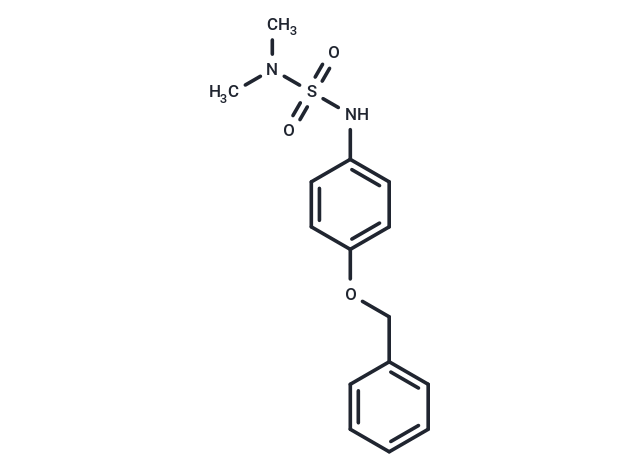Shopping Cart
- Remove All
 Your shopping cart is currently empty
Your shopping cart is currently empty

When administered intratumorally, AR antagonist 3 shows effective inhibition on the growth of tumor. AR antagonist 3 is a potent and selective antagonist of androgen receptor (AR) with an IC 50 of 0.47 μM. AR antagonist 3 dose-dependently decrease the FRET signal with an IC50 of 18.05 μM [1].


| Description | When administered intratumorally, AR antagonist 3 shows effective inhibition on the growth of tumor. AR antagonist 3 is a potent and selective antagonist of androgen receptor (AR) with an IC 50 of 0.47 μM. AR antagonist 3 dose-dependently decrease the FRET signal with an IC50 of 18.05 μM [1]. |
| In vitro | AR antagonist 3 (compound T1-12), administered at various concentrations (0.01, 0.1, 1, 10, 100 μM), exhibits significant androgen receptor (AR) antagonistic effects, shown by its potent inhibition activity (eGFP IC50 = 0.47 μM; PSA IC50 = 1.42 μM) and suppression of LNCaP cell proliferation. At 0.1, 1, and 10 μM over 48 hours, it reduces c-Myc and KLK3 protein expression levels, indicating a notable impact on critical AR-responsive proteins. Its dose-dependent reduction in the FRET signal (IC50 = 18.05 μM) underscores its inhibitory potency. Specifically, at 10 μM and after 2 hours, the compound disrupts dihydrotestosterone (DHT)-mediated AR translocation to the nucleus in LNCaP cells. These findings are corroborated by cell viability and proliferation assays on LNCaP-ARR2PB-eGFP and various cancer cell lines (LNCaP, 22Rv1, C4-2, PC3, DU145), where the compound demonstrated significant AR antagonistic activity and inhibited LNCaP cell proliferation across tested concentrations and periods. |
| In vivo | AR antagonist 3, when intratumorally injected at a dosage of 2.5 mg/kg weekly for 25 days, successfully inhibits tumor growth, achieving a final tumor growth inhibition rate of 65% [1]. This study utilized 6-week-old male CB17 SCID mice of specific pathogen-free grade, weighing 18-24 g [1]. The consistent administration and dosage reaffirm the compound's efficiency in halting tumor progression within the specified experimental timeframe. |
| Molecular Weight | 306.38 |
| Formula | C15H18N2O3S |
| Cas No. | 349573-58-6 |
| Storage | Powder: -20°C for 3 years | In solvent: -80°C for 1 year | Shipping with blue ice. |

Copyright © 2015-2025 TargetMol Chemicals Inc. All Rights Reserved.